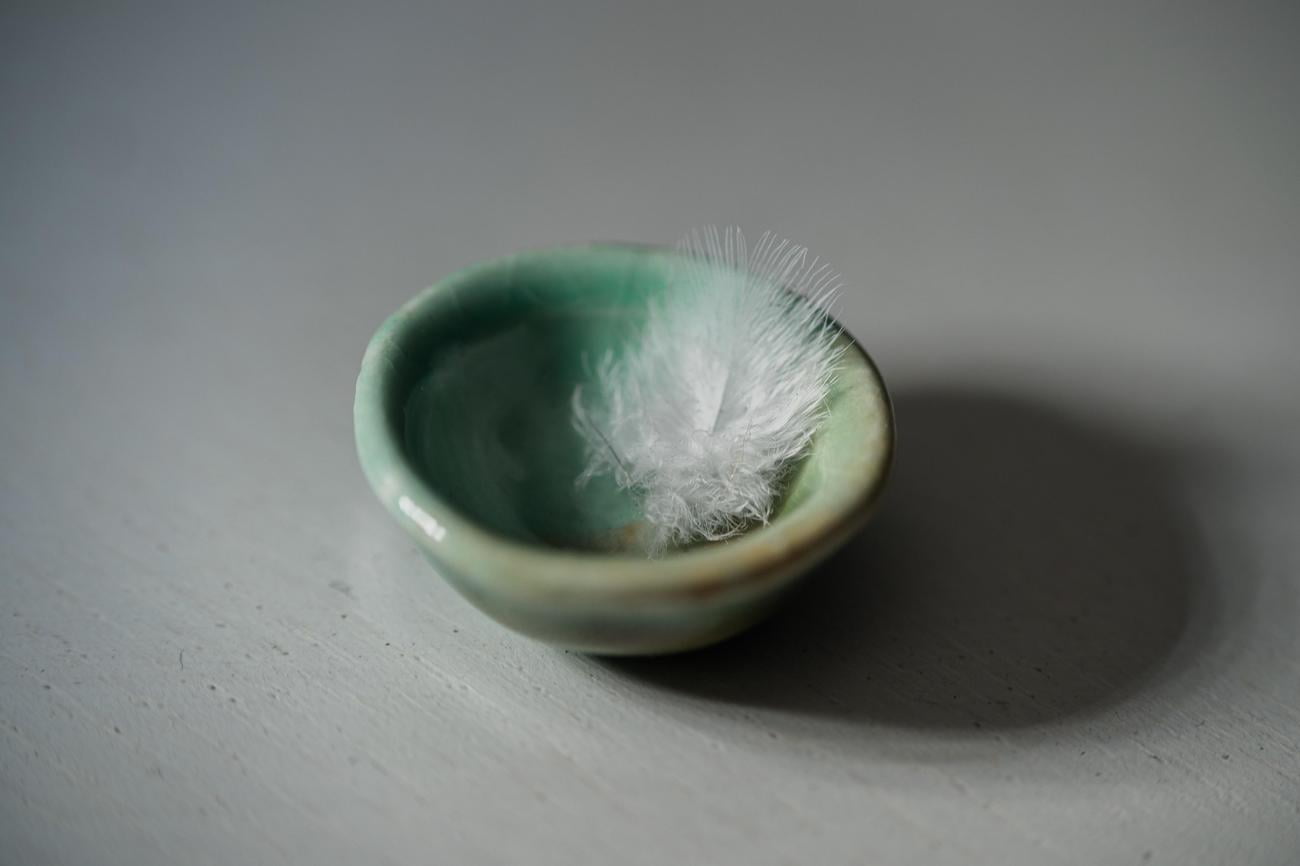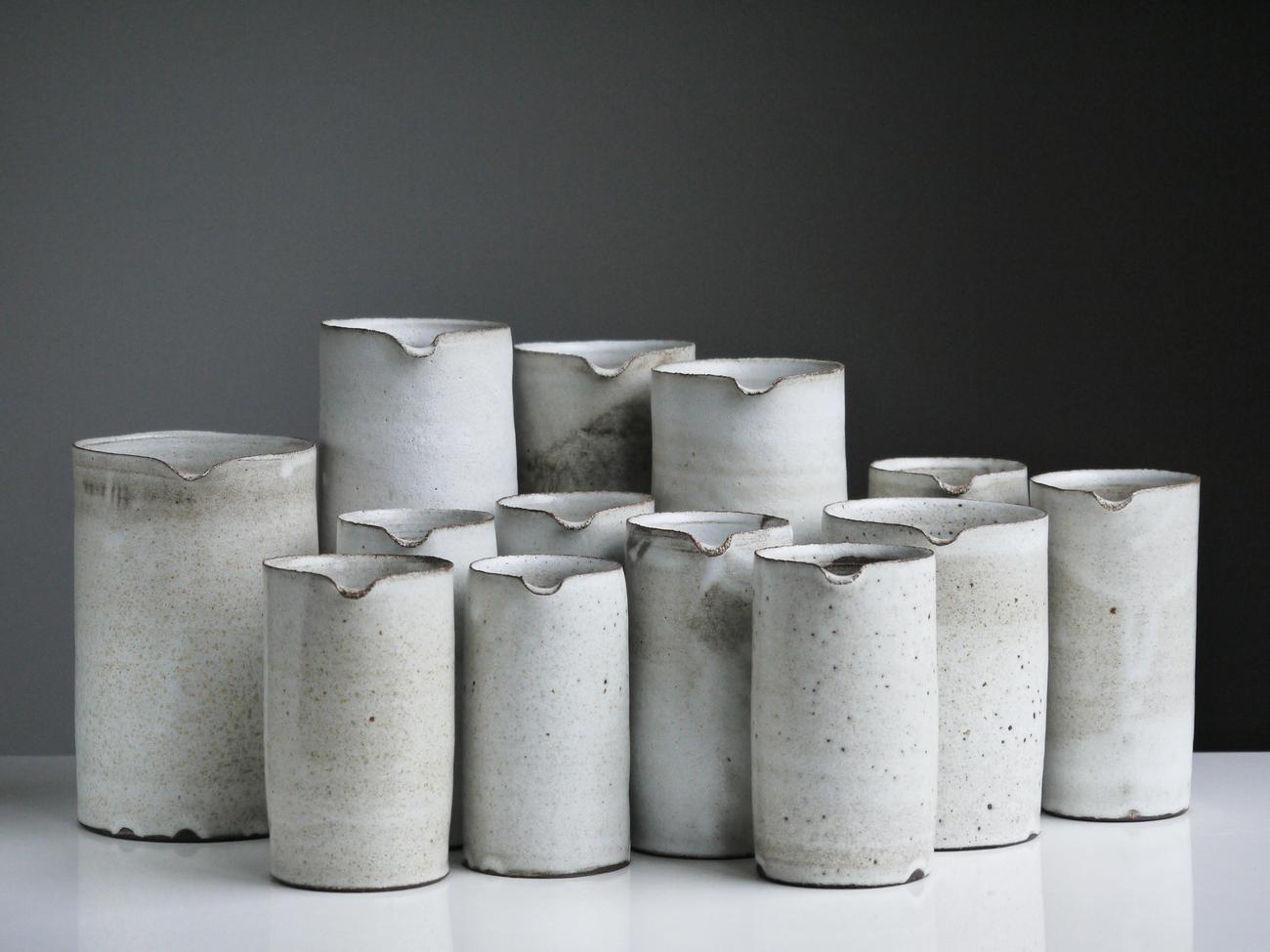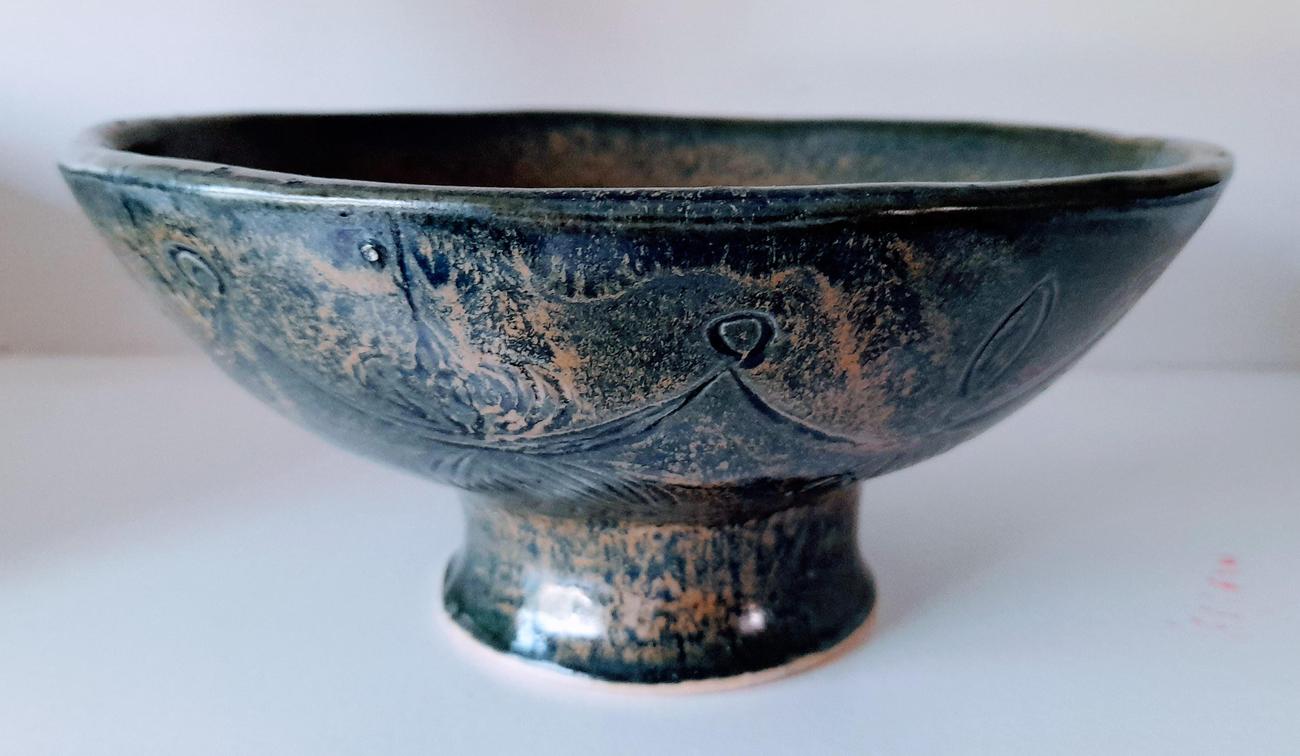Discover the captivating world of ceramics and explore the fascinating facts that make this ancient craft a vital part of civilizations throughout history. In this article, titled “Fascinating Facts About Ceramics,” we delve into the role of ceramic and glass materials in shaping and preserving society, with a specific focus on clay jars. Join us as we uncover the cultural significance, technical intricacies, and intriguing history behind these beautifully crafted pieces. Whether you’re a ceramics enthusiast or simply curious about the wonders of human creativity, this article promises to provide an engaging and enlightening glimpse into the realm of ceramics.

Facts About Ceramics
Ceramics, those beautiful and durable creations that have been around for thousands of years, have an intriguing history and an array of fascinating properties. Let’s dive into some interesting facts about ceramics that will captivate your curiosity!
Ceramics, derived from the Greek word “keramos” meaning potter’s clay or pottery, are inorganic, nonmetallic solids that are fired at high temperatures. This firing process gives ceramics their remarkable strength, durability, and resistance to heat, water, air, and chemicals. However, keep in mind that ceramics may exhibit brittleness and weakness when subjected to tension and shearing forces.
The roots of ceramics can be traced back to at least 24,000 BC, with the discovery of the oldest human-made ceramics in Czechoslovakia. These ancient artifacts provide us with a glimpse into the creativity and resourcefulness of our ancestors. It’s incredible to think that ceramics have been an integral part of human culture for so long, evolving and adapting to suit various purposes.
Today, ceramics find applications in a wide range of industries and everyday items. From tiles that decorate our homes to plates that grace our dining tables, ceramics add beauty and functionality to our lives. But their uses don’t stop there! Did you know that ceramics are also key components in items such as watches, hip replacements, dental crowns, lenses, electronics, and magnets? The versatility of ceramics is truly remarkable.
One key feature of ceramics that sets them apart is their ability to be glazed. Glazing is a process where a thin layer of glass is applied to the ceramic surface, resulting in a smooth and colored finish. This glazing not only enhances the aesthetic appeal but also reduces the porosity of ceramics, making them less prone to absorbing liquids. So the next time you sip your morning coffee from a ceramic mug, remember the magic of glazing that keeps it looking pristine.
Let’s summarize the fascinating facts about ceramics we’ve explored:
1. Ceramics are inorganic, nonmetallic solids that are fired at high temperatures.
2. They possess exceptional strength, durability, and resistance to heat, water, air, and chemicals.
3. Ceramics can be brittle and weak in tension and shearing.
4. The word “ceramics” originates from the Greek term “keramos,” meaning potter’s clay or pottery.
5. The oldest human-made ceramics date back to at least 24,000 BC and were discovered in Czechoslovakia.
6. Ceramics serve various purposes and can be found in tiles, plates, watches, hip replacements, dental crowns, lenses, electronics, and magnets.
7. The glazing process adds a smooth, colored surface to ceramics, reducing their porosity and enhancing their aesthetics.
Now that you have a deeper appreciation for ceramics and their incredible attributes, take a moment to admire the ceramics around you. From traditional pottery to cutting-edge technologies, ceramics continue to amaze us with their beauty, functionality, and timeless appeal.
Facts about Ceramics
Ceramics have been fascinating humans for centuries. From ancient pottery to modern-day masterpieces, these art forms never fail to mesmerize with their beauty and craftsmanship. But have you ever wondered what slips in ceramics are? If you’re curious to uncover the secrets behind this technique, click here to explore the article: what is slip in ceramics.
Now, let’s delve deeper into the enchanting world of ceramics. Glaze, another intriguing aspect, can transform a simple piece of pottery into a captivating work of art. If you’re eager to learn more about the magic behind glazes, follow this link: what is glaze in ceramics.
But wait, there’s more! Greenware, a term often used in ceramics, holds yet another exciting revelation. To unveil the mysteries of greenware and its significance in ceramic creation, click right here: what is greenware in ceramics.
Lastly, if you’re curious about the process of how these awe-inspiring ceramics are made, we’ve got you covered. Click here to embark on a journey of discovery: how are ceramics made.
Come, embark on this captivating ceramic adventure and unlock the secrets behind these timeless art forms.
Ceramic and Glass Materials’ Role in Civilization
Ceramics and glass materials have been integral to the development and progression of civilizations throughout history. From ancient times to the modern era, these materials have served a multitude of purposes, ranging from practical to artistic. Let’s delve into the fascinating ways in which ceramics and glass have shaped our world.
The Versatile Nature of Glass-Ceramics
Glass-ceramic materials hold a unique place in the realm of ceramics and glass. These materials possess both an amorphous (non-crystalline) phase and one or more crystalline phases. The controlled crystallization process used to produce glass-ceramics gives them an exceptional combination of properties from both glasses and ceramics. This fascinating feature has opened up a plethora of possibilities for their application in various industries.
Glass-ceramic technology shares properties with both glasses and ceramics, paving the way for innovation and versatility in its usage.
A Glimpse into the History of Ceramics
The history of ceramics traces back thousands of years, with evidence of its existence dating back to ancient civilizations. From the firing of natural clays to the development of advanced structural and technical ceramics, this craft has evolved significantly. Different cultures have contributed to the progress of ceramics, each showcasing their unique expertise.
While civilizations in the western part of the globe excelled in glass development, others mastered the arts of pottery, metal-working, print-making, and weaving. This diversity in craftsmanship highlights the vital role ceramics played in shaping cultural identity and heritage.
Ceramics have acted as a means of expression, preserving cultural traditions and artistry throughout history.
From Pottery to Nuclear Reactors
Ceramic materials find applications in a wide range of industries, highlighting their versatility and indispensability. While pottery remains a cherished art form, ceramics have also found their way into the technological realm. They play a crucial role in the production of everyday objects and high-tech components alike.
For instance, the utilization of ceramics in nuclear reactors showcases their exceptional resistance to extreme conditions. The ability of ceramics to withstand high temperatures, corrosion, and radiation makes them ideal candidates for such critical applications.
Ceramics have seamlessly integrated into various industries, providing durability and functionality in diverse settings.
The Role of Research and Discoveries
The Journal of the American Ceramic Society has been instrumental in the advancement of the field, publishing influential papers that have shaped our understanding of glass and ceramics. It serves as a testament to the continuous pursuit of knowledge and the dedication of experts in the ceramics industry.
The discoveries and innovations in the realm of ceramics have transformed this ancient craft into a scientific endeavor. Researchers continually explore and push the boundaries of ceramic technology, resulting in materials with tailored properties for specific applications.
Through research and experimentation, ceramic technology has progressed, meeting the ever-evolving needs of our society.
In conclusion, the intricate history, diverse applications, and continuous advancements in ceramics and glass materials make them indispensable elements of our civilization. Their timeless beauty, unmatched durability, and ability to adapt to various requirements have made ceramics and glass integral to our cultural, technological, and scientific endeavors.
Ceramics and glass materials continue to shape civilizations, imbuing them with beauty, functionality, and a touch of ancient heritage.
Facts About Clay Jars
Ceramic clay jars have been around for centuries and have played significant roles in various cultures. These timeless pieces are not only functional but also hold historical and cultural significance. Let’s dive into some fascinating facts about clay jars:
- Versatile Storage – Clay jars have the incredible ability to store a wide range of items. From spices like masala, achar, and pickle, to essentials like rice, flour, and sugar, these jars have been used for centuries to safely keep various household staples. They can even store treats like jams, chutneys, biscuits, and namkeen. The possibilities are endless!
“Clay jars have been a reliable storage solution for generations, accommodating a diverse array of items from spices to sweet treats.”
- Handcrafted with Love – Clay jars are made with pure Indian clay and are carefully hand-painted. Each jar is a unique piece of art, crafted by skilled potters who understand the nuances of clay molding and firing. The intricate designs and vibrant colors add a touch of beauty to any kitchen or home décor.
“The artistic craftsmanship involved in creating clay jars adds a personal touch and elevates them from mere storage containers to exquisite pieces of art.”
- Symbolic Significance – Throughout history, clay jars have held symbolic meanings. They have often been used to safeguard sacred scrolls or valuable documents, making them objects of great reverence and trust. The fragility and vulnerability of clay jars also symbolize the impermanence of life, reminding us to cherish every moment.
“Clay jars have long been revered for their symbolism, representing both the importance of valuable knowledge and the transient nature of existence.”
- Ancient Origins – Clay jars have a rich history that dates back thousands of years. They are one of the oldest human inventions, serving both functional and decorative purposes. From ancient civilizations to contemporary societies, these jars have stood the test of time and continue to be a staple in many households.
“The enduring legacy of clay jars spans millennia, with their presence in ancient civilizations resonating with the modern world.”
- Cleaning and Maintenance – Maintain the beauty and longevity of your clay jars with proper cleaning and maintenance. Gently wipe the jars with a damp cloth or use mild soap and water for a thorough cleanse. Avoid harsh chemicals or abrasive cleaning agents to prevent damage to the delicate clay surface.
“Preserving the integrity of clay jars is as simple as adopting a gentle cleaning routine, ensuring they remain a cherished part of your home for years to come.”
In conclusion, clay jars are not just ordinary storage containers; they are wonderful pieces of functional art. These fascinating vessels have deep cultural and historical significance, offering a unique blend of beauty and utility. Embrace the tradition and elegance of clay jars in your home, and create a connection to the ancient artistry that has shaped human civilization.
[Table]
| Fact | Description |
|---|---|
| Versatile Storage | Clay jars can store a variety of items, from spices and staples to treats and snacks. They provide a versatile storage solution for a wide range of household needs. |
| Handcrafted with Love | Each clay jar is crafted with pure Indian clay and hand-painted, showcasing the artistic talents of skilled potters. The personalized touch adds aesthetic appeal to these functional storage containers. |
| Symbolic Significance | Clay jars hold symbolic meaning, representing the preservation of valuable knowledge and reminding us of the transient nature of life. Their significance goes beyond mere utilitarian purposes. |
| Ancient Origins | Clay jars have a long history, dating back thousands of years and serving as vital vessels in ancient civilizations. They have evolved over time but continue to be an integral part of many cultures and households. |
| Cleaning and Maintenance | Proper cleaning and maintenance are essential for preserving the beauty and integrity of clay jars. By adopting gentle cleaning practices and avoiding harsh chemicals, these treasured pieces can be enjoyed for generations. |
10 Fascinating Facts About Ceramics
[youtube v=”t54QONB45pY”]
Ceramics: An Ancient and Modern Building Material
Ceramics have been used as a building material for centuries, with cultures like the Egyptians, Greeks, and Romans all utilizing this versatile material. Today, thanks to technological advancements, ceramics continue to be a modern construction material.
“Whether Egyptians, Greeks, or Romans – almost all cultures have used ceramics as a building material for themselves.”
Nature’s Recipe for Ceramics
Did you know that ceramics are a natural product? The creation of ceramics requires just four simple ingredients: water, air, fire, and, of course, earth. This natural composition contributes to the unique properties and benefits of ceramics.
“All you need is: water, air, fire, and of course earth.”
Efficient Production and Sustainability
In today’s world, the production of ceramics is highly efficient. A single cubic meter of raw material can produce more than one cubic meter of building material. This means that for every unit of raw material used, we can generate twice as many load-bearing bricks or three times as many thermal insulation bricks. This not only saves resources but also reduces energy consumption and emissions.
“1 cubic meter of raw material produces more than 1 cubic meter of building material… This saves earth, energy, and emissions.”
Limitless Possibilities in Design
One of the most exciting aspects of ceramics is the endless possibilities it offers in terms of shape and color. Different compositions and production methods allow for a wide range of architectural and design choices. From intricate patterns to bold colors, ceramics can truly transform any space.
“Different compositions and production methods lead to endless options in architecture and design.”
Boosting Local Economies
The production and use of ceramic products also bring significant economic benefits to local communities. The extraction of raw materials, the manufacturing process, and the utilization of these building materials create job opportunities and contribute to regional development.
“The extraction of raw materials, the production, and use of the building materials create jobs in the region.”
Creating Healthy Indoor Environments
Bricks, one of the most common types of ceramics used in construction, offer a natural way to regulate indoor climate. A solid brick house can effectively control humidity and temperature, resulting in a healthier and more comfortable living environment.
“A sturdy brick house regulates humidity and temperature. This ensures a healthy indoor climate.”
Durability and Resilience
Ceramic products have a reputation for their exceptional longevity. When used for exterior walls, ceramics can withstand frost, temperature fluctuations, and even fire. Additionally, ceramic materials are highly resistant to chemicals, making them an ideal choice for various applications.
“Exterior walls resist frost and temperature fluctuations. Ceramic products can withstand fire and almost all chemicals.”
Timeless Beauty
Brick houses, a prominent use of ceramics, offer timeless beauty that never goes out of style. Their classic and enduring appearance adds a touch of elegance to any neighborhood. Whether it’s a modern design or a traditional aesthetic, a brick house always looks good.
“Brick houses are timeless and retain their appearance permanently.”
Cost-Effective and Sustainable
When it comes to saving money, ceramics excel. Due to their long lifespan, ceramics offer low life cycle costs, making them an excellent investment. Furthermore, even after several years, the resale value of a ceramic-based structure remains high.
“As a travel all-rounder, the life cycle costs are extremely low. And the resale value remains high. Even after years.”
A Second Life for Ceramics
Coarse ceramics can be easily recycled and given a second life. These materials can be reused as a base for new bricks, in road construction, noise barriers, tennis floors, and even as plant substrate. This sustainable practice reduces waste and promotes environmental preservation.
“They are reused as a basis for new bricks, in road construction, for noise barriers, tennis floors, plant substrate… and much more.”
With these fascinating facts, it becomes clear that ceramics are not only a timeless building material but also a sustainable and versatile choice for a wide range of applications. From improving indoor climate to reducing ecological footprint, ceramics continue to shape our modern world.

FAQ
Q: What are ceramics?
A: Ceramics are inorganic, nonmetallic solids that are fired at high temperatures. They are hard, strong in compression, and resistant to heat, water, air, and chemicals.
Q: Where does the word “ceramics” come from?
A: The word “ceramics” comes from the Greek term keramos, meaning potter’s clay or pottery.
Q: What is the history of ceramics?
A: The oldest human-made ceramics date back to at least 24,000 BC and were found in Czechoslovakia. The history of ceramics has evolved from firing natural clays to the creation of advanced structural and technical ceramics.
Q: What are some uses of ceramics?
A: Ceramics are used for various purposes, such as tiles, plates, baths, watches, hip replacements, dental crowns, lenses, electronics, and magnets. They have been used for centuries in various industries, including nuclear reactors.
Q: What are glass-ceramic materials?
A: Glass-ceramic materials have both an amorphous phase and one or more crystalline phases. Controlled crystallization is used to produce glass-ceramics.
- China II Review: Delicious Food & Speedy Service - April 17, 2025
- Understand Virginia’s Flag: History & Debate - April 17, 2025
- Explore Long Island’s Map: Unique Regions & Insights - April 17, 2025
















